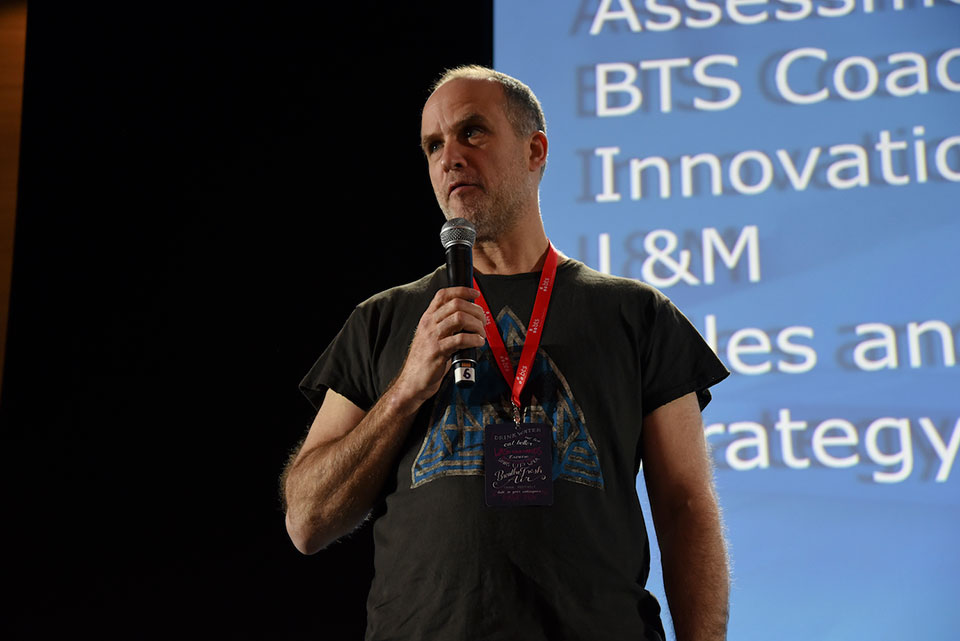Demystifying AI: Guiding Your Team With Confidence and Transparency

AI is no longer just a futuristic concept; it’s transforming how businesses operate, creating both excitement and uncertainty. For leaders, the challenge is to communicate AI’s value clearly, address concerns openly, and foster alignment across the organization. By embracing transparent communication, encouraging small-scale experimentation, and building trust, leaders can turn AI into a tool for growth rather than a source of resistance. This article offers strategies to help leaders confidently guide their teams through AI’s evolving role in business success.
Key Takeaways:
- AI has become essential for business success, requiring leaders to communicate its benefits and risks transparently to build trust and align strategies.
- A disconnect exists between executives’ confidence in AI and employees’ concerns about workload, underscoring the need for leaders to bridge this gap.
- Leaders should address AI-related concerns—like job security and data privacy—openly to foster trust and facilitate alignment.
- Fast, small-scale AI experiments and tailored communication strategies are key to easing adoption and encouraging cross-functional collaboration.
- Effective AI leadership involves building a culture of education, transparency, and shared understanding, turning uncertainty into growth opportunities.
Artificial intelligence has evolved from a novel concept to a critical driver of business success, transforming the way today’s companies operate and compete. Leaders now face the challenge of communicating AI’s promises and risks as those promises and risks evolve in real time. These conversations aren’t just about explaining the technology; they’re about building trust and aligning your organization’s strategy with AI’s capabilities.
This alignment is more urgent than ever. A recent Upwork survey found a striking disconnect: while nearly 100% of executives are confident AI will boost productivity, 77% of employees feel it’s increasing their workloads. This gap highlights a growing tension between leadership expectations and employee experiences. Leaders must bridge this divide, ensuring that AI’s role in the organization is understood, embraced, and effectively integrated into the way people work.
Communicating AI’s Impact
As AI reshapes industries, it also stirs uncertainty and raises questions throughout the organization. Employees may fear for their job security, board members may question the ROI, and customers may be concerned about data privacy and ethics. Addressing these concerns head-on is critical—not only to maintain trust, but also to drive alignment and ensure AI becomes a lever for growth rather than resistance.
At the root of most skepticism is a fear of the unknown. When people don’t understand how AI affects their work, their future, or the business, hesitation is inevitable. This is where leaders need to step up as communicators instead of just decision makers. We must demystify AI, reframing it as a force for opportunity, innovation, and transformation rather than a disruptive threat.
To lead these conversations effectively, empathy and transparency are non-negotiable. Here are four key strategies to help you engage in clear, confident, and impactful discussions about AI’s role in your organization:
- Acknowledge and address concerns
AI brings valid concerns—data privacy, ethical risks, and job security, to name a few. Address these directly by being transparent about AI’s limitations and the safeguards you’ve put in place. Create an environment where employees feel heard and can express their worries, turning concerns into conversations that foster trust.Building an ethical AI framework is key to addressing these fears. Every AI initiative should undergo rigorous scrutiny, weighing desirability, feasibility, profitability, and ethics. By consistently applying these principles, you can ensure AI projects don’t just work but align with the company’s values and ethical standards.
- Educate yourself and your team
To lead in AI, you need to understand its fundamentals. AI systems—from chatbots like ChatGPT to complex autonomous systems like self-driving cars—operate on shared principles: data, algorithms, and predictions. Leaders must build a solid foundation in these concepts to communicate effectively across the organization. But technical knowledge alone isn’t enough; it’s also about framing AI’s benefits, such as productivity gains, enhanced decision-making, or even new revenue streams. Regular training sessions are critical for you and your team, covering AI’s mechanics, strategic applications, and best practices for communicating its impact to different stakeholders, including employees and regulators.Consider, for example, a retail company that wants to implement AI-driven inventory management. Leadership might focus on teaching the team how the technology works as well as how it could reduce stockouts, improve product availability, and boost customer satisfaction. By pairing technical training with clear messaging about these benefits, they can achieve a smooth internal adoption and gain buy-in from key stakeholders. Leaders should adopt this kind of approach while also looking at AI’s broader implications—from industry shifts to future trends—and how they could shape their organization’s strategic direction.
- Promote fast experimentation
An IBM survey found that 61% of CEOs are pushing to adopt generative AI faster than their teams are comfortable with. This urgency can create friction if not managed carefully, but small-scale experimentation can ease the transition. Take Mercedes-Benz, for example: The company began by integrating a generative AI-powered smart sales assistant into its online storefront to enhance e-commerce capabilities. Seeing success in this targeted application, Mercedes-Benz plans to expand its AI use to call centers and personalized marketing campaigns. This step-by-step approach helped the company showcase the benefits of AI on a smaller scale before expanding its reach.The key is to experiment quickly but thoughtfully. Focus on high-impact use cases, run small-scale experiments, and validate assumptions early. Engaging nontechnical teams in these experiments ensures AI solutions are practical, user-friendly, and aligned with business needs. Remember, AI isn’t just for technologists—it’s a team sport. Those closest to the business should drive AI projects with support from technical teams. This approach accelerates AI adoption while encouraging cross-functional collaboration, increasing buy-in across the organization. By involving diverse perspectives, AI initiatives remain grounded in real business outcomes, ensuring that the technology is aligned with the company’s strategic goals and priorities.
- Develop a clear communication strategy
A well-crafted AI narrative is essential. Leaders must tailor their communication for different audiences, from boardrooms to frontlines. For example, regulators may focus on data privacy, while employees may be more concerned about job security. Simplifying AI concepts with relevant real-world examples makes them relatable and digestible for everyone. To create a message that resonates, consider this checklist:– Simplify technical language: Use AI tools like visual dashboards or explainable AI models to break down complex concepts, making them accessible to nontechnical stakeholders.
– Address specific concerns: Focus on what matters most to each group—emphasize data security for regulators, while highlighting job creation and upskilling opportunities for employees.
– Provide tangible benefits: Share clear examples of how AI initiatives will directly impact their work or the organization’s success, from increased productivity to new market opportunities.
Celebrating success stories of AI within your organization builds excitement and trust. Showcasing wins—while openly discussing failures and lessons learned—fosters a culture of innovation and continuous improvement.
AI is no longer just on the horizon; it’s already transforming how businesses operate. As leaders, how we guide our teams through this shift will determine our success. By educating ourselves and our people, addressing concerns with openness, experimenting quickly, and delivering a clear AI message, we can turn uncertainty into opportunity.
This is more than adopting new technology—it’s about creating a culture where AI drives progress and people feel empowered. When employees, customers, and stakeholders understand AI’s value, it becomes a tool for growth, not a source of fear. Our role is to lead with clarity, fostering trust and alignment every step of the way.
In a fast-evolving landscape, the ability to confidently lead conversations about AI isn’t simply a nice-to-have; it’s a must. AI success ultimately hinges on trust—trust that employees, customers, and investors place in leaders who can articulate a clear vision for the future. By following these strategies, you’ll not only bridge the gap between AI’s potential and its real-world impact, but also build the trust needed to position your organization to thrive in the future.
—————–
Written by Peter Mulford.
Have you read?
World’s Most Powerful Passports.
Richest Countries In The World.
Poorest Countries In The World.
Bring the best of the CEOWORLD magazine's global journalism to audiences in the United States and around the world. - Add CEOWORLD magazine to your Google News feed.
Follow CEOWORLD magazine headlines on: Google News, LinkedIn, Twitter, and Facebook.
Copyright 2025 The CEOWORLD magazine. All rights reserved. This material (and any extract from it) must not be copied, redistributed or placed on any website, without CEOWORLD magazine' prior written consent. For media queries, please contact: info@ceoworld.biz








